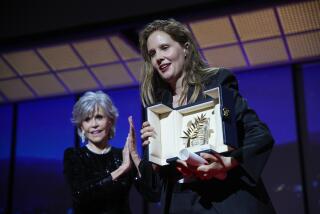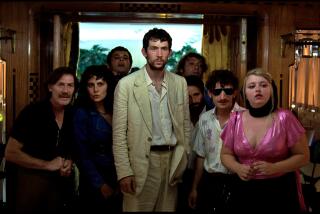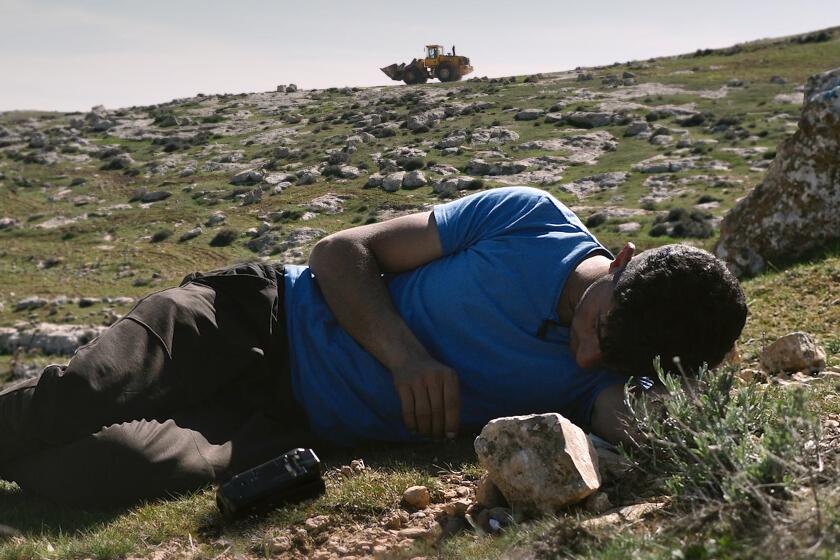Claude Sautet; Film Director Elaborated on Simple Themes
Claude Sautet, the French film director responsible for the award-winning “A Heart in Winter” and the Academy Award-nominated “A Simple Story,” is dead at age 76.
Sautet, whom Times film writer Kevin Thomas has called “a master at the depiction of middle-age crisis,” died Saturday in Paris of liver cancer.
He was responsible for about 30 films, including the internationally acclaimed “The Things of Life” with Michel Piccoli and Romy Schneider in 1969, “Cesar and Rosalie” with Schneider and Yves Montand in 1972, “Vincent, Francois, Paul and the Others” with Piccoli, Montand and a young Gerard Depardieu in 1976, “A Few Days With Me” in 1989 and “Nelly and Monsieur Arnaud” in 1996.
“A Simple Story” was nominated for a best foreign film Oscar in 1978, and “A Heart in Winter,” which attracted critical praise in America, earned nine nominations and won two Cesar Awards (the French equivalent of the Oscar) in 1993. His final film, “Nelly and Monsieur Arnaud” also collected several Cesars, including one for Sautet’s direction.
Thomas once said that in Sautet films, “nothing happens and everything happens” as they manage to explore very subtle nuances of human emotion.
“My goal is to choose subjects or anecdotes, if you will, that are quite simple,” Sautet told The Times in 1996, “to develop them simply, to film them simply, and to find multiple levels in relationships, modulations in relationships--so that the progress of the relationship between two people follows a journey you do not even realize is taking place.”
A former music critic and a lifelong aficionado of classical music, the director added: “It’s the same thing that struck me when I was a young man about Bach--the basic tune was a small formula, but all possible variations could be made with that formula. Which means that you can, with small variations, go through your plateaus, your valleys, your rain, the sea, rivers--it’s life.”
He set “A Heart in Winter” in a violin-making and repair shop, and used the work of composer Maurice Ravel in its soundtrack.
Sautet’s films shared a recurrent theme of friendship, involving a group of people surrounding and supporting his main characters. The director said that pattern evolved from his childhood experiences in an extended family with a cafe as the center of community life.
“This is where I also discovered the secret loneliness of people, of being lonely in a crowd,” he once told The Times. “One of the classic subjects is solitude. . . . I always try to create an imbalance, an edge to friendship. You never know what’s going to trigger the next moment. My real subject is always uncertainty.”
Sautet’s careful examinations of the human psyche did not always result in happy endings for his films.
“Well, at some point you have to end it,” he said. “When the boat gets to the port you have to leave it.”
Sautet was himself middle-aged by the time he found success as a director. Growing up poor in the Paris suburb of Montrouge, he failed his exams for a high school diploma. So his mother sent him to the School of Decorative Arts to study sculpture.
During the Nazi occupation of France during World War II, Sautet avoided duty in Germany by working with juvenile delinquents, an experience that, he later quipped, “taught me a lot in directing actors.”
At war’s end, desperate for work, he passed a civil service exam to become a provincial bureaucrat. But his angry mother intervened again and got him accepted at France’s state film school.
So he went to work in the motion picture industry. But he labored many years as an assistant director and script doctor before making his directing debut in 1955, and still longer before achieving international notice in 1969 with “The Things of Life.” (That film was remade as “Intersection” in 1994, starring Richard Gere and Sharon Stone.)
Sautet was married to Graziella Escojido and they had one son.
More to Read
Only good movies
Get the Indie Focus newsletter, Mark Olsen's weekly guide to the world of cinema.
You may occasionally receive promotional content from the Los Angeles Times.









